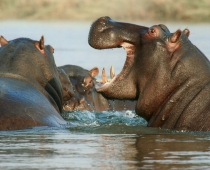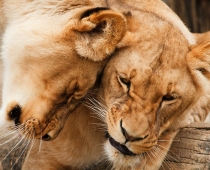Major national parks and wildife reserves across Africa lost up to 60% of their lions, giraffes, buffalo and other large wild animals between 1970 and 2005, raising the spectre of wildlife on the continent soon being confined to isolated pockets dependent on international money for protection.
Researchers at the Zoological Society of London (ZSL) and the University of Cambridge studied animal population changes at 78 protected areas across Africa and found the steepest falls in west Africa, where up to 85% of wildlife had been lost in the last 35 years, and in east Africa, where nearly half of all wildlife has disappeared. The research, which was collated from parks including popular tourist safari destinations such as the Masai Mara in Kenya and the Serengeti in Tanzania, and published last year, found increases only in southern Africa.
The cause of the continent-wide decline has been attributed mainly to the lack of money and people needed to police parks, as well as the encroachment of humans on animal habitats. In addition, war and the growing bushmeat trade is said to have decimated populations.
The numbers of elephants, hippos and other animals are believed to have also plummeted in southern Sudan, following years of war. The soon-to-be independent country has the world’s second largest annual migration of large mammals and vast herds of gazelle and antelope, but these have been decimated by fighters hunting them them for their meat. While wildlife declines in protected areas were large, the researchers said the loss of large mammals outside parks and reserves was much worse with many species like rhino now practically extinct outside protected areas.
Kenya, one of the most popular places in the world for wildlife, has been hit particularly hard. A report commissioned in 2009 by the country’s wildlife service said that the its lion population was declining so fast that they could be extinct there within 20 years.
But conservationists say that populations can recover, if money is available. Elephants and rhinos appeared to be heading towards extinction in much of Africa in the 1980s, but governments backed by western public opinion acted to protect them.









